Nobita’s desk drawer, Digory’s closet, the rabbit hole in Wonderland and behind a poster of The Shawshank Redemption. The doors that lead us to another world are sometimes only poorly hidden.
And they have been there, sometimes for thousands of years, waiting for someone who, at the opportune moment, will accidentally find.
So is our story today. It tells the story of a man who discovered an entire underground city beneath his house, with a single swing of the hammer.
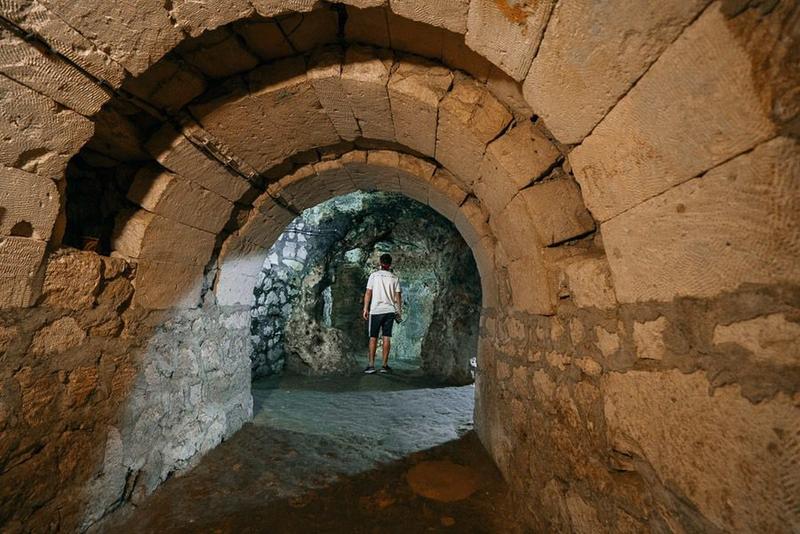
While repairing the basement, the man discovered an ancient city 18 floors deep below his house.
It was an afternoon in 1963, a man in the Turkish town of Derinkuyu was just trying to fix the wall in his basement. He swung the sledgehammer to smash the hole in the wall.
But the wall suddenly collapsed. It tumbled backwards and revealed a door leading into a tunnel. The curious man reached for the flashlight and entered the tunnel. But the more he walked, the more he realized that this tunnel opened up more turns and larger tunnels.
They lead into successive, endless rooms. Sometimes the man found himself crossing a great hall. It was a huge underground complex that could not be fully explored in an afternoon.
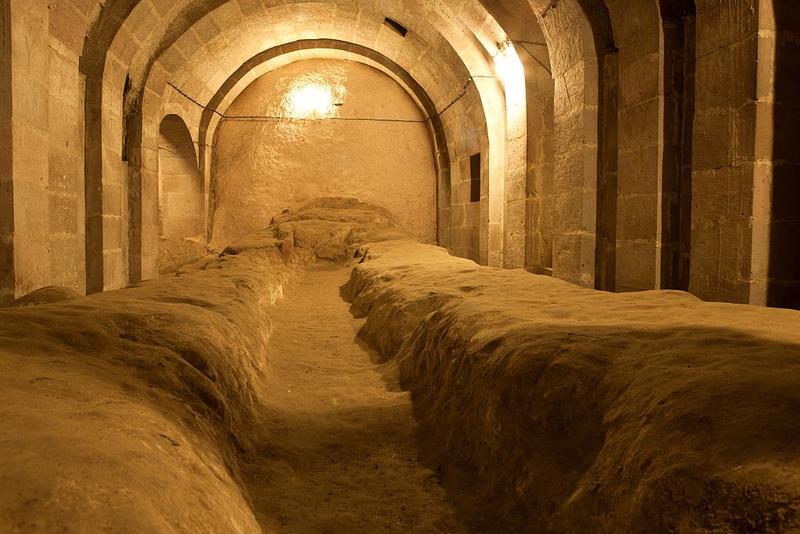
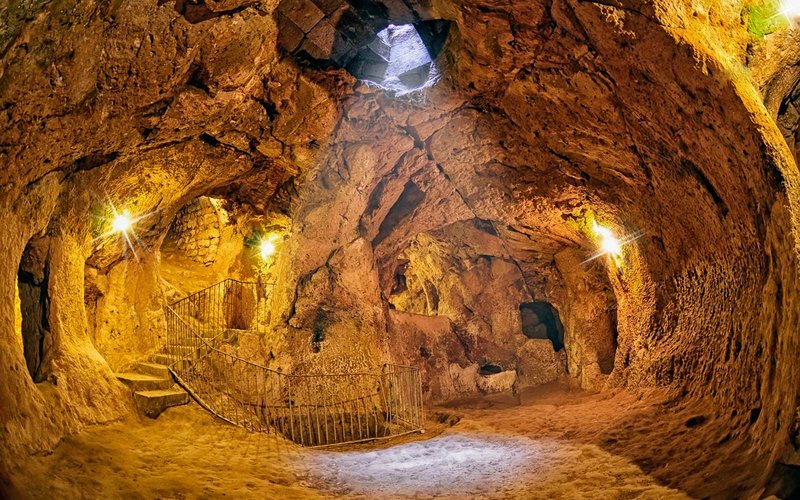
The underground city below Derinkuyu, a huge structure 76 meters deep is divided into 18 floors and has enough rooms for 20,000 people to live in at once.
Official documents do not record the name of the owner. But all emphasize he is the one who found the underground city beneath Derinkuyu, a gigantic structure 76 meters deep divided into 18 floors and has enough rooms for 20,000 people to live in at once.
But in the end, when was this underground city built? By whom? And why did they build it?
Mysterious ancient city 18 floors deep underground
To get a contextual view, we have to go back to the geography of Derinkuyu. This is a town located in Cappadocia, a semi-arid region in central Turkey.
Cappadocia is famous for its magnificent landscapes, dotted with earth pyramids or “fairy chimney”. They are soft, tall and thin rocks, usually formed from the process of erosion of sedimentary and volcanic rocks.

The fairy chimneys in Cappadocia, Turkey are eroded volcanic rock left behind.
Also because volcanic rocks are not hard, the locals in Cappadocia have for thousands of years traditionally dug them to build underground houses. They created storage rooms, temples and even bunkers beneath soft rock pits.
In Cappadocia today there are still hundreds of underground houses. About 40 of them have 2 or more basements. However, there is no other underground tunnel system as large and famous as Derinkuyu.
During the investigation, archaeologists discovered the ancient city of Derinkuyu has a total of 18 floors. It is an architectural block with countless small buildings such as bedrooms, bathrooms, kitchens, wells, armory, barns…
Every room in the city is designed with a different size. There are extremely small areas for stone tombs. On the contrary, there are large spaces that are used as schools, halls and even a church.
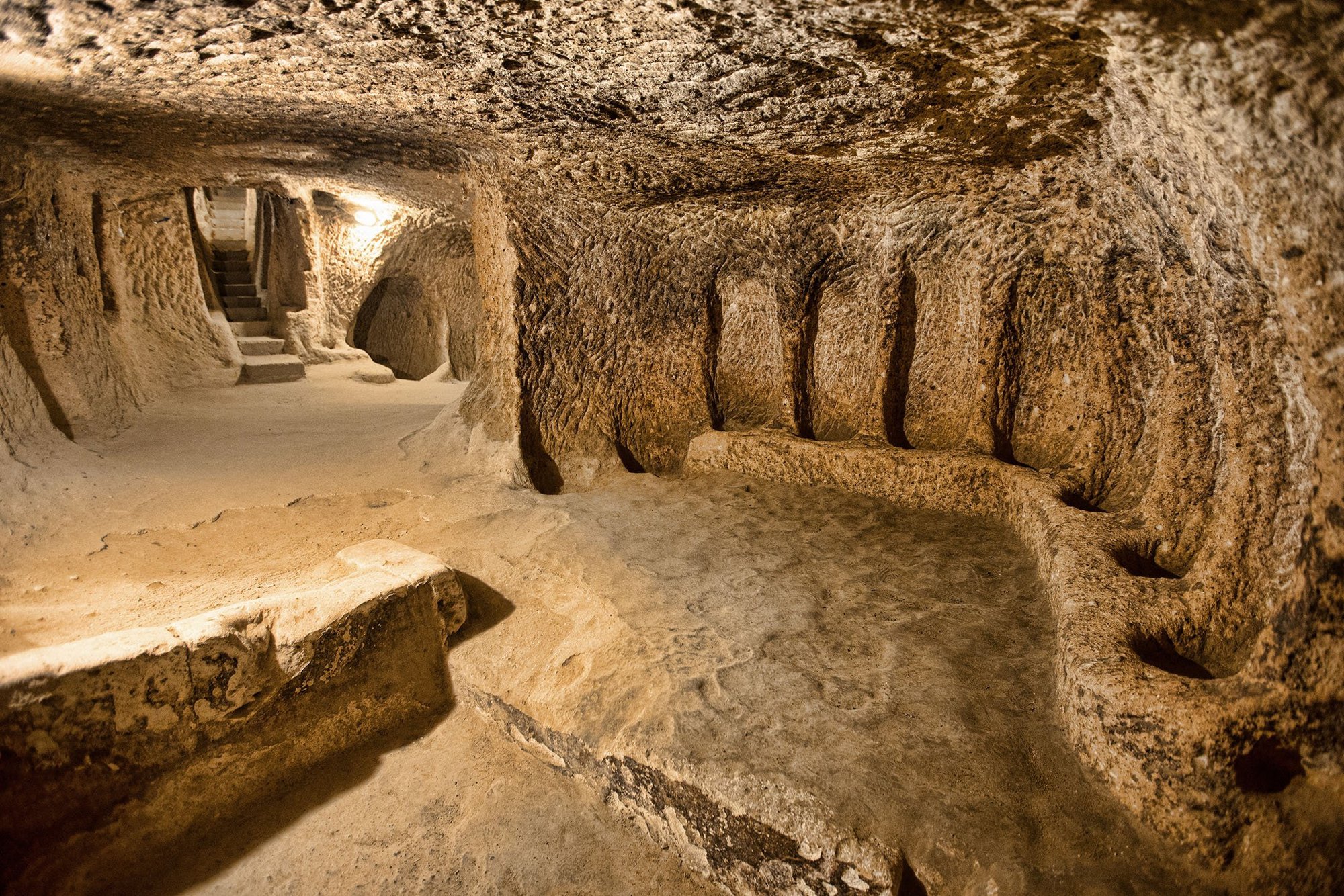
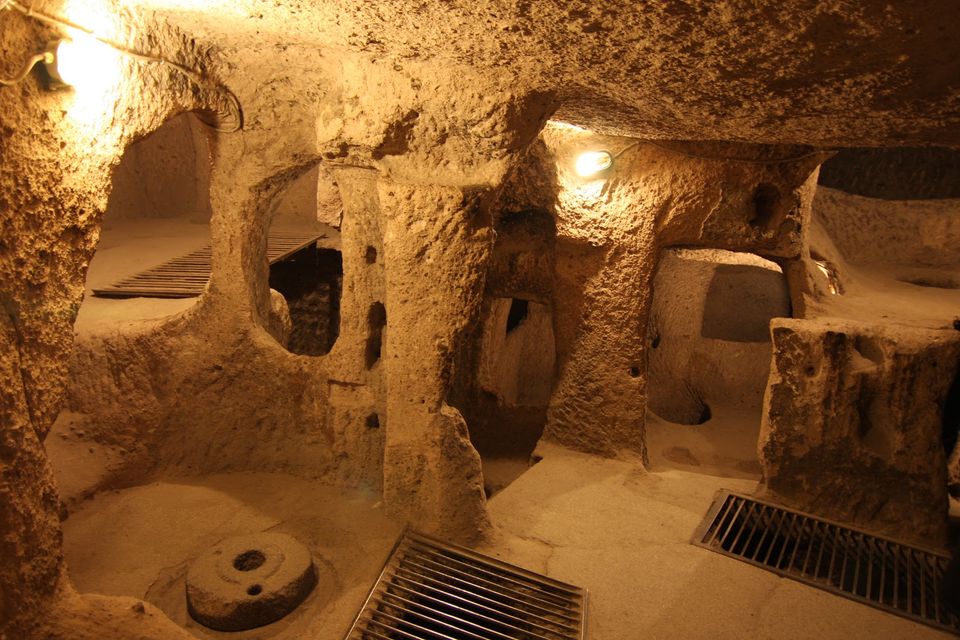
The rooms inside Derinkuyu are designed with heterogeneous sizes, they serve a variety of purposes, from sleeping places to livestock breeding, including churches and catacombs.
There are many passages in the city, each floor is connected by a corridor with a solid stone door design. And while soft volcanic rock is easy to work with, its pillar systems need to be designed to be solid.
It shows the technical level of construction workers and engineers when not a single room under the underground city of Derinkuyu has collapsed in thousands of years.
Another system that shows the level of the builders is the ventilation problem. Derinkuyu has a ventilation shaft system designed with a large density, helping to bring the air from outside into the ground in the most natural way.
Surveys show that the city has a total of more than 15,000 ventilation shafts, most of which are about 10 centimeters wide and reach down to the depths of the first and second floors. However, these shafts are so efficient that they can bring the wind down to the 8th floor.
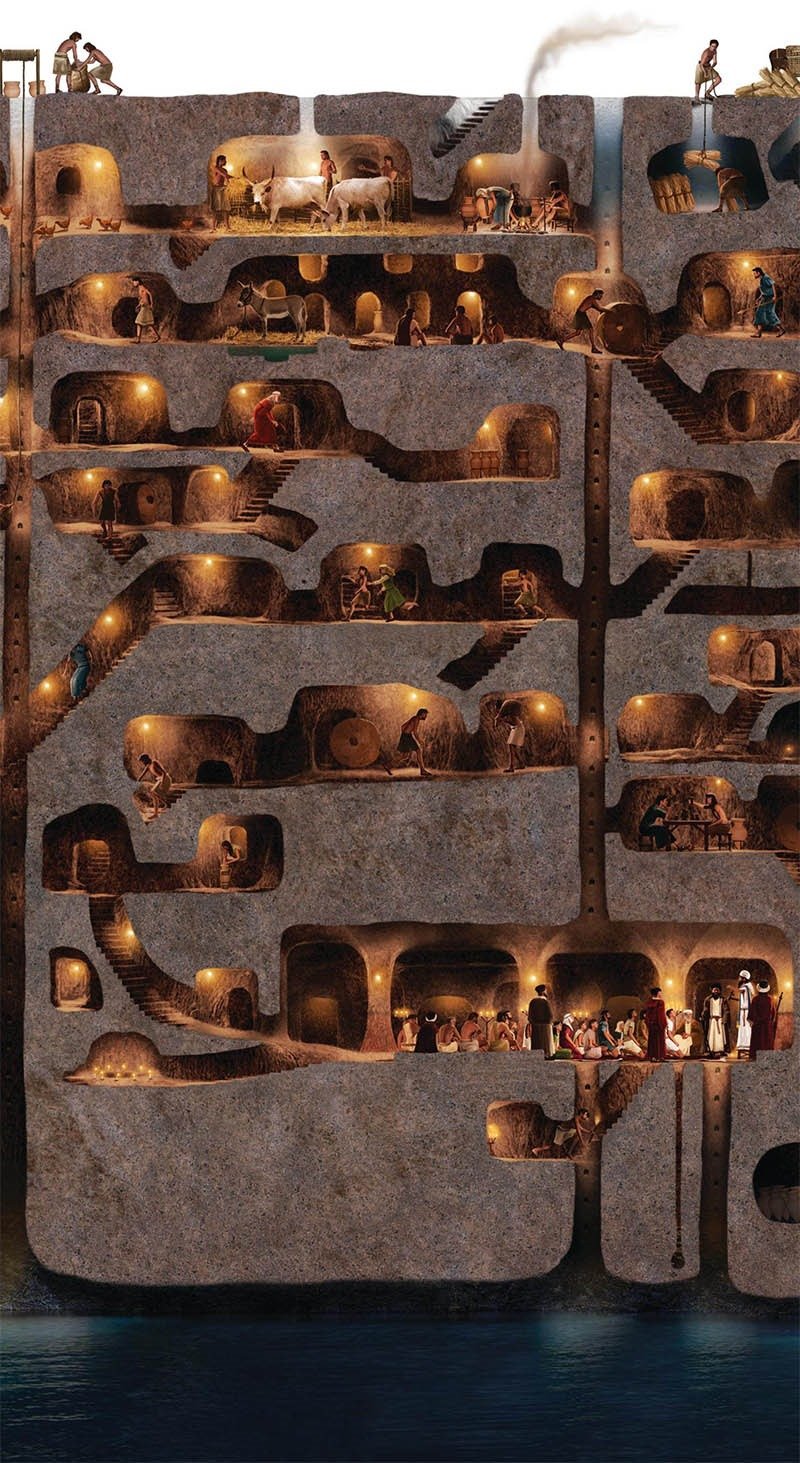
The Derinkuyu down ventilation system supports life and daily living up to the 8th floor of the city.
Activities in Derinkuyu also depend on the wind. The upper floors closest to the ground are used as living and sleeping areas – which makes sense, since these are the places with the best ventilation. The deepest floors are mainly used to store items, but there is a special dungeon for holding people.
Who is the author of this underground city? And what did they build it for?
Among the designs that make up the underground city of Derinkuyu, archaeologists have especially noticed its entrances. Most of them are made from stones that roll from the inside, and are so well camouflaged that it is difficult for outsiders to detect.
So, one theory is that this underground city was designed to hide from the enemy. Derinkuyu is located in a key area and is often prone to war. Many experts believe that the Phrygians built the city between 1200 and 800 BC.
After the Phrygians, the land of Cappadocia was occupied by the Persians, Greeks, Macedonians and Armenians respectively.
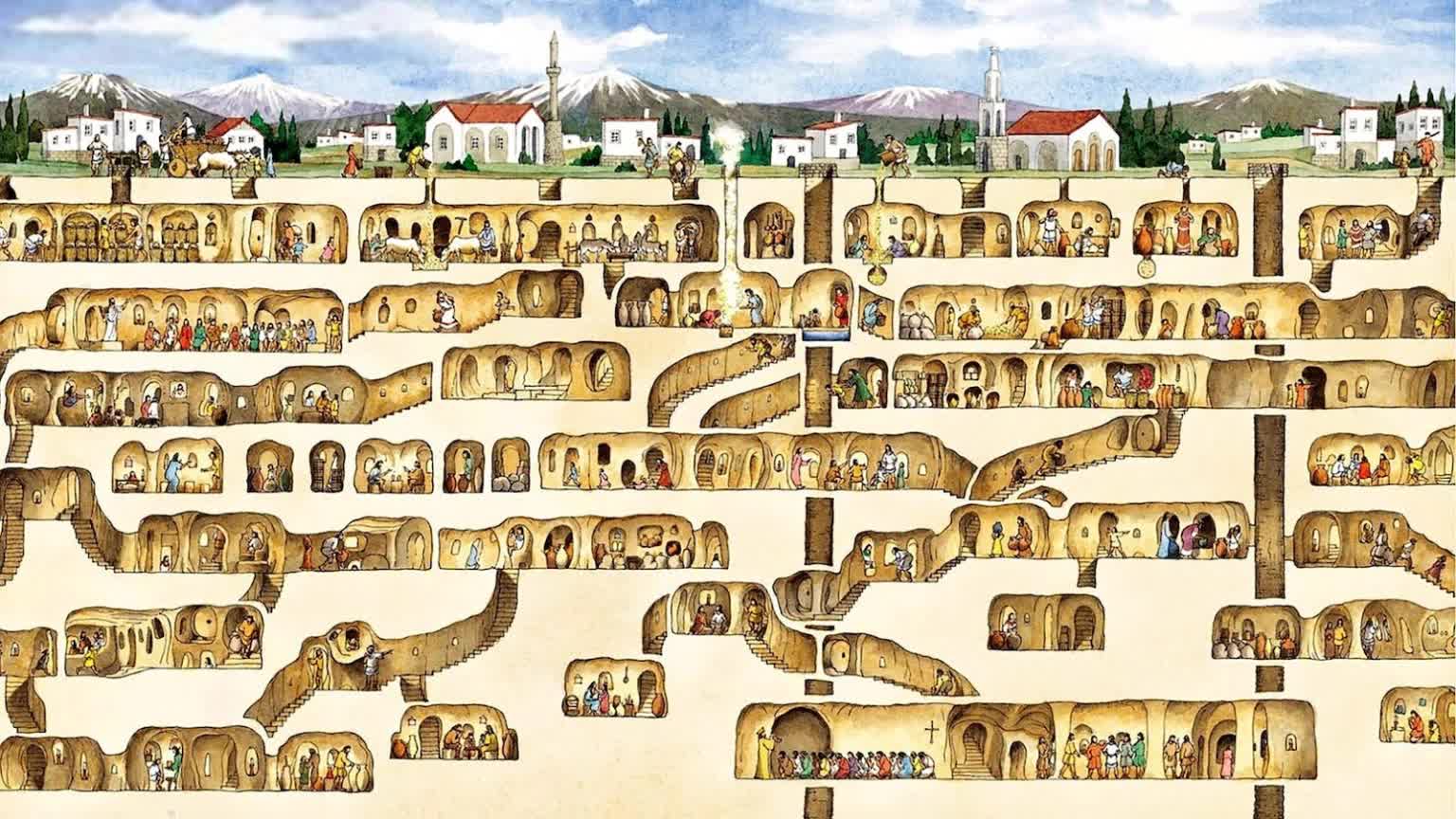
It is theorized that Derinkuyu was built by the Hittites as early as the 2000s BC.
The earliest written record of the underground city in Cappadocia is from Xenophon’s Anabasis, a prominent Greek historian, written in 370 BC.
He wrote that Cappadocia had houses underground. They enter like the mouth of a well, people will move into the city by ladder and cattle will move by their own way.
In addition to the Phrygian theory, there are also some archaeologists who speculate that the oldest part of the underground city of Derinkuyu was built by the Hittites, around 2000 BC.
It was then gradually upgraded by the Phrygians. The final engineers to complete the city are believed to be local Christians, who lived in the first centuries AD. Therefore, the latest designs in Derinkuyu are boldly Christian.
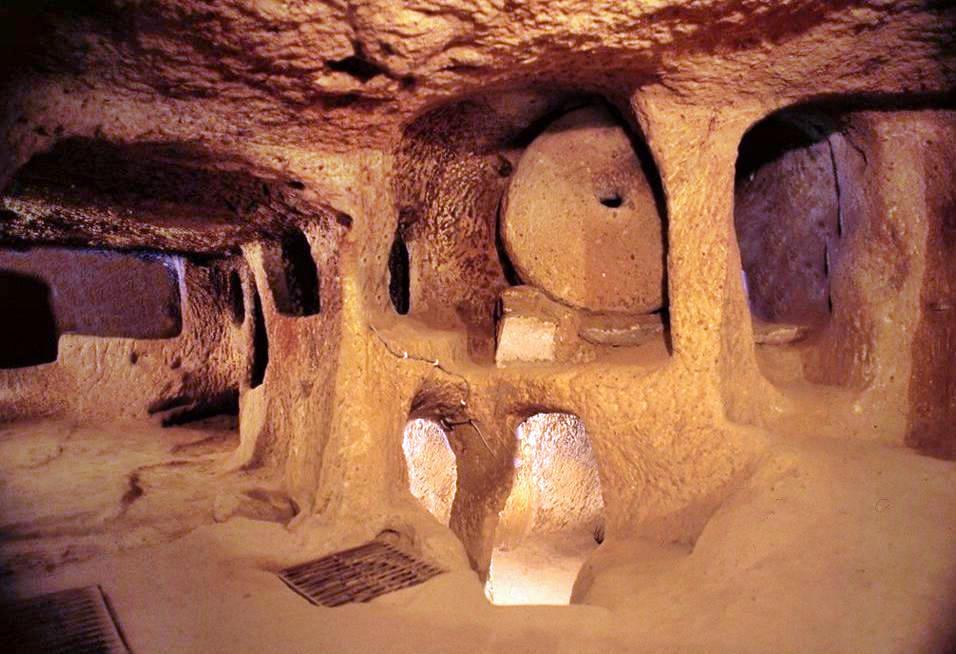
Circular stone doors were used to block the passageways and camouflage the gate above the ground.
Around the same time, documents show that the underground city of Derinkuyu sheltered Christians during the Roman conquest.
It continued to serve as a refuge for the locals during the Byzantine-Arab wars that lasted from the late 8th to the late 12th centuries. This was followed by Mongol raids into the area. 14th century, and finally the conquest of the Ottoman Empire by the Turks.
It was not until the 20th century, when the Turks attacked and forced the Greeks to leave this land, the underground city of Derinkuyu officially belonged to Turkey. It is not clear why the city has been abandoned since then and no one knew of its existence until the man in Derinkuyu decided to repair his basement.
However, the reason might be because its entrances were camouflaged too tight. It is ironic that some wells in Derinkuyu have been dug deep and reached this underground city. But it seems the well diggers ignored the irregularities about it.

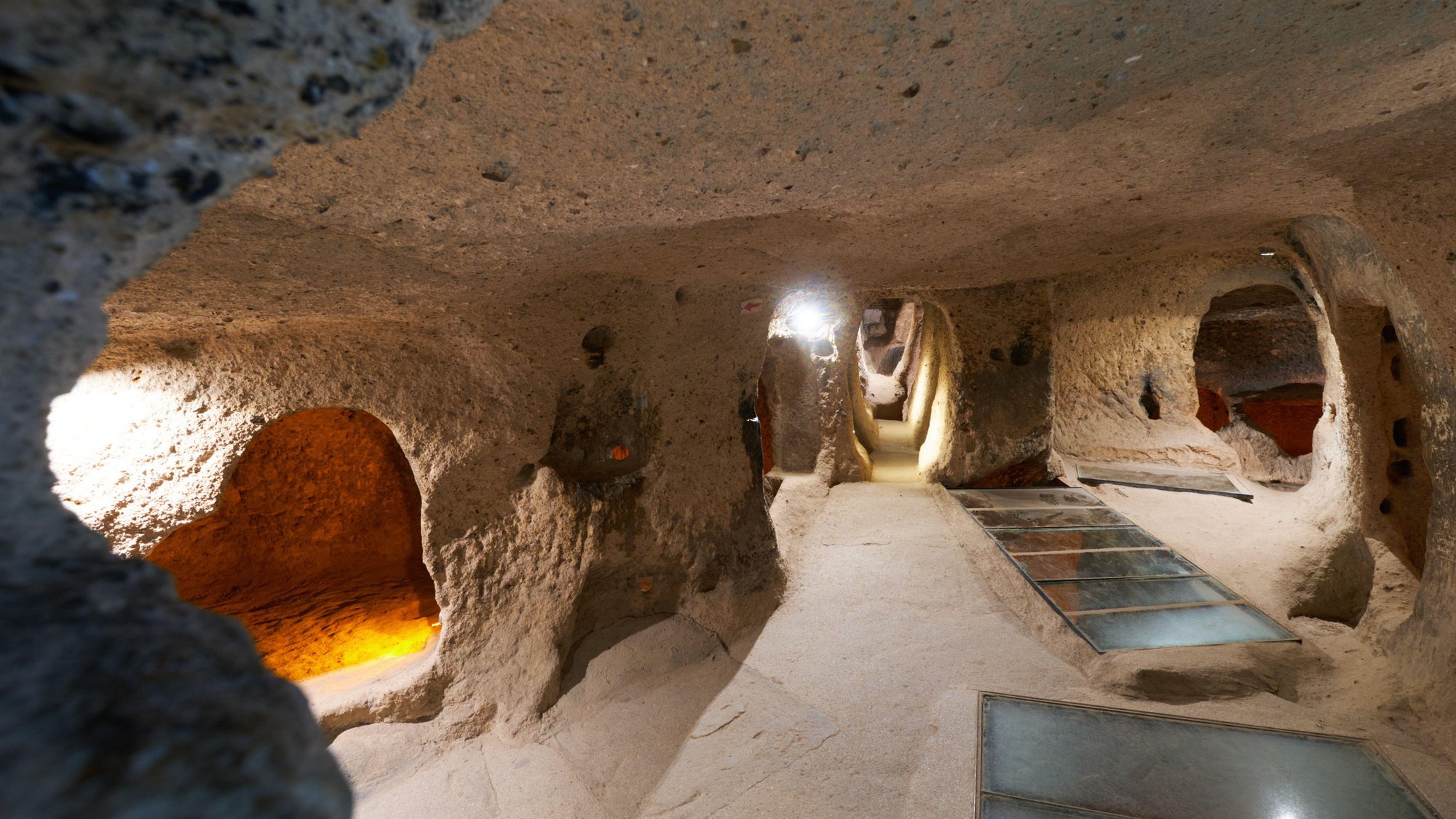
Today, the underground city of Derinkuyu has become one of the top tourist attractions in Cappadocia, Turkey.
For decades, it turned out that buckets of water visited the underground city of Derinkuyu every day. Unfortunately, they don’t have a mouth to tell their owners about Derinkuyu’s presence.
It’s coincidental,”derin kuyu” in is Turkish also means “deep well.” And today, this underground city has become one of the top tourist attractions in Cappadocia. Therefore, it is no longer considered. It’s an unexplored world.
But perhaps, somewhere behind the basement walls of someone’s home in the world, there may still be entrances to another unknown underground city. Or maybe right in your basement, who knows. Maybe you should also go find a sledgehammer and explore.
Synthetic
